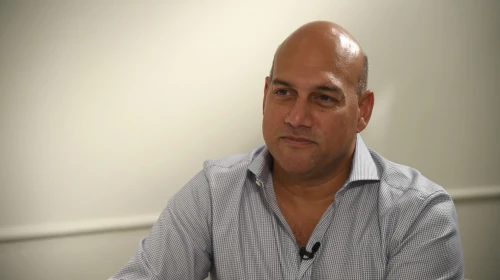The success of asset-light start-ups such as Uber and Airbnb is well known, but can their lessons be applied more broadly to large, established companies? As its title suggests, the thesis of 2014’s best-selling business book, Exponential Organizations: Why New Organizations Are Ten Times Better, Faster, Cheaper Than Yours (and What to Do About It), is that they can be.
Rather than reinvent the organization from the center out, the book argues that large corporations need to start at the edge and gradually work their way in. They also need to hire new people and may need new leaders, too.
Salim Ismail, a co-author of Exponential Organizations, recently sat down with Antoine Gourévitch, a BCG senior partner and managing director, to discuss the book's implications for large corporations. Edited excerpts of their conversation follow.
Do you think it’s possible that traditional companies can be as performance oriented as Airbnb or Uber?
Yes, absolutely. We’ve seen that in the past. The obvious example is Apple, a big company. Ten years ago, they totally transformed themselves. They launched small, edge organizations to attack the music industry, the phone industry, etcetera.
I see your point, but in more traditional companies, like mining, automotive, chemicals, do you think it’s still possible?
The more that information is driving a particular industry, the more it is subject to disruption, and the more capability you have to achieve that kind of growth because software scales. Every domain that we thought of as classically physical is becoming more reliant on software.
We used to have cars that had computers in them. The Tesla is a computer that happens to have wheels. More than that, it’s even an app, because it actually updates itself once a week. We can see this transition happening even in older industries that we think are very physical and slow to move.
I understand how new companies, such as Tesla, Uber, or Google, are managing to grow like that. Can you describe what you see as a common characteristic at these companies? How can Fiat or another automotive company emulate them?
We’ve now looked at about 100 of what we call exponential organizations. They are growing and scaling at a minimum ten times faster than their peers. If you look at Airbnb, Uber, etcetera, they are leveraging three components. The first is they all have a massive transformative purpose. Google’s is to organize the world’s information. Singularity University’s is to impact a billion people positively. It’s a tag line that gives you a social purpose. Every single exponential organization has one. The second is that they’re learning how to leverage externalities and information enablement. Uber is using a combination of GPS location systems, reputation systems, payments systems, and information to enable this old asset of a car.
We’re seeing this new model evolve, and they keep a very small footprint, and they can scale outside.
Our old way of building a business was to get an asset or workforce. Put a legal boundary around it, and sell access to scarcity. These new organizations are tapping into abundance. It’s a very different heuristic.
If I am a very big company, I need to do two things. One is to go after these new businesses, and create new products and services that would transform the world, and the other one is manage or protect my current business. How do I do both?
We have several recommendations. Number one is updating your leadership. We encourage senior management in big companies to adapt to this new world or retire. Pick one and do it. The second is do not try and transform your existing organization into one of these new things. It’s very radical. It takes a long time. It’s very political and costs a lot.
What you can do is take your disruptive change agents to the edge of the organization. Apple is actually the master of this. They take a small disruptive team to the edge of the organization, and they say “go attack another industry.” They have a nice design capability and a great technology supply chain, but their core innovation is actually this organizational enrichment.
Most big companies have extraordinary insights into adjacent industries. The data sets that people have is incredible. By tapping those you could really do some extraordinary damage in adjacent industries, and we think that’ll start to happen more and more.
What do you do with the legacy business?
You do incremental innovation. You don’t try radical change. For example, you change your brand into a massive transformative purpose. Coca-Cola has done that. They don’t have a mission statement that says, “Sell sugar water through a highly specialized supply chain.” It’s “open happiness.”
Second, people are implementing social communities, leveraging the lean start-up methodologies as tweaks to the existing org structure. We suggest that people staff the new businesses with entirely new people because the mind-set just isn’t there in the legacy business.
I can see IT starting to transform, but many businesses are not. Have you seen transformation in a traditional company where IT and business are working closely together?
It’s very hard. I think the hardest role in corporate world today is the CIO. On one level, you’re trying to protect the data and the assets of the company against external security threats. On the other hand, you are the only person who has the digital perspective. By default, you’re running innovation and driving the business forward. Juxtaposing those two is incredibly polarizing.
We’re finding increasingly that the CMO may create a whole new digital branding experience, but the business can’t deliver. This is the difficulty that we’re going to have. Our recommendation is leave the existing business as it is and then launch these new things off the side.
Thank you so much. It was a pleasure.
Thanks for having me.
About Salim Ismail
At a Glance
Born in Hyderabad, India
Birthday: May 17, 1965
Education
1989, bachelor of science, University of Waterloo
Career Highlights
2008 to present, global ambassador and founding executive director, Singularity University
2007–2008, vice president, Yahoo!
2007, cofounder, Angstro
Outside Activities







